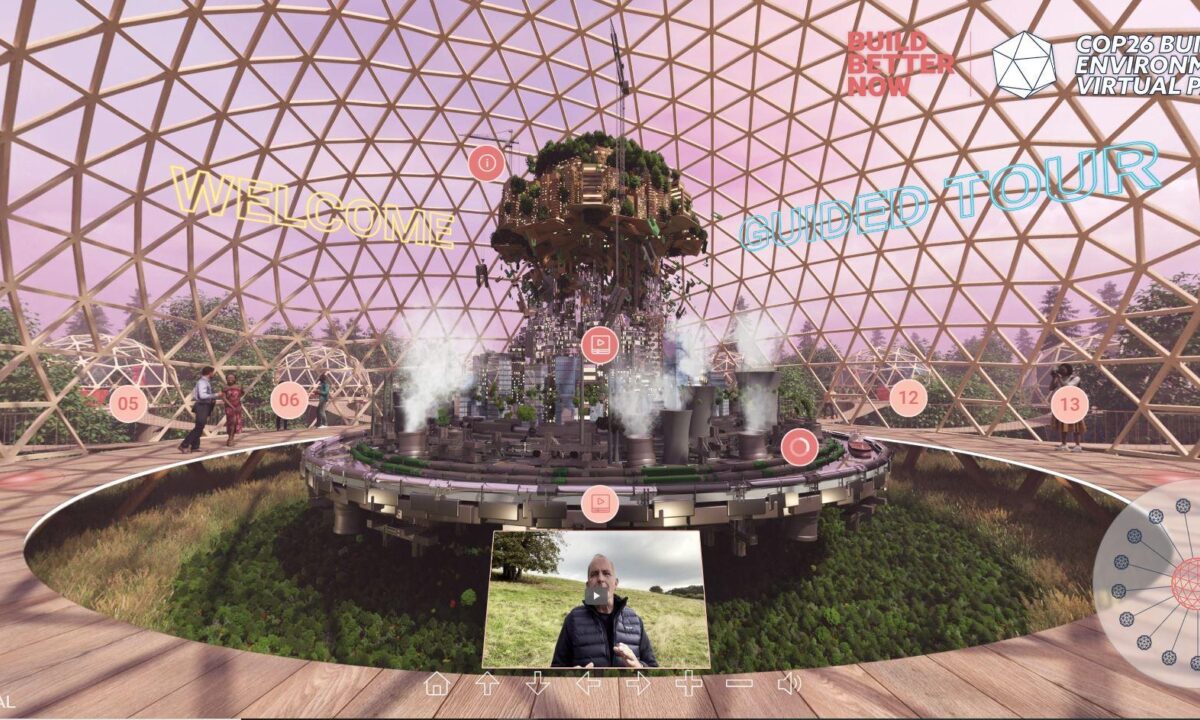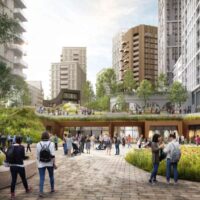Why we must Build Better Now
We were proud to be part of the #BuildBetterNow Virtual Pavilion – a space for more than 100 organisations across the built environment sector to bring a shared voice to COP26. Given that the built environment accounts for nearly 40% of the world’s carbon emissions, and yet only 20% of global NDCs (Nationally Determined Contributions) cover it, the pavilion was a vital space to raise awareness of the solutions for achieving net zero.
The pavilion, run by UKGBC, consisted of two parts: an immersive virtual exhibition space, featuring 17 inspiring projects from around the world, and a series of events, covering topics such as empowering youth, circularity, transport and the cost of (in)action. All the talks are now available on catch-up.
In week one, we collaborated with Passivhaus Trust and Good Homes Alliance to host a virtual event: Sustainable city regions: How can we enable zero carbon living at scale? To watch it on catch-up, register here.
People forget about the massive cost of not building to a Passivhaus standard – the cost to the planet, the damage to our environment, and all the financial consequences that brings
Ian Pritchett, Director, Ssassy Property
Our Chief Executive and Co-founder, Sue Riddlestone OBE, chaired a discussion with Lynne Sullivan OBE, Chair of Good Homes Alliance; Brad Pettitt, Former Mayor of Fremantle and a Member of the Legislative Council of West Australia; Greg Ryan, Sustainability Manager at DevelopmentWA; Ian Pritchett, Director at Ssassy Property, and Mayor Eckart Würzner, the Mayor of Heidelberg, in Germany.
WGV is the only project I’ve ever seen that actually got better over time. There was rising ambition and collaboration ... It was wonderful to see ideas emerge
Brad Pettitt, Former Mayor of Fremantle and a Member of the Legislative Council of West Australia
The talk coincided with the COP theme of accelerating the transition to clean energy – so the speakers focused on considering the role the sector can play in enabling clean energy, as well as drawing together a range of issues that are key to developing a progressive and sustainable built environment.
The UN is calling for emissions from buildings to be halved by 2030, and for the elimination of bad buildings
Sue Riddlestone OBE, Chief Executive and Co-founder, Bioregional
- Brad Pettitt opened by describing how the city of Fremantle has used our One Planet Living framework to become one of the most sustainable cities in Australia.
- Greg Ryan discussed how WGV at White Gum Valley, a zero-carbon housing scheme in Fremantle, was driven by community engagement and went on to become DevelopmentWA’s first One Planet Community.
- Mayor Würzner set out how the leading eco-town of Heidelberg, Germany, has for the last 13 years ensured that every development built there met Passivhaus standards, reducing total energy demand by over 90%.
- Ian Pritchett highlighted the often-overlooked costs of not building to a Passivhaus standard, and how Springfield Meadows, a One Planet Living Global Leader, locks up at least as much carbon as it emits. Ian also highlighted that while UK developers are required to meet building regulations governing energy efficiency, this performance is never measured in real life.
- And Lynne Sullivan set out the need for a 'just transition' – ensuring that the costs of moving to a zero-carbon economy are not paid by the poorest in society – as well as the need to join-up net-zero homes with wider community infrastructure.
We were also joined via video by Emma Davis, Principal Sustainability Officer at Greater Cambridge Shared Planning, who discussed the role that planning policy should play in achieving sustainable development; and Tom Dollard, Head of Sustainable Design at Pollard Thomas Edwards, who presented a case study on the net-zero carbon Blenheim Estate. Finally, Bill Cotton, Corporate Director, Environment and Place Oxfordshire County Council and Cherwell District Council, explained how the Oxford-Cambridge Arc is planning 100,000 new homes over the next decade, while continuing the journey to net-zero through initiatives such as Pathways to a Zero Carbon Oxfordshire.
We’d like to thank all our speakers once again for a wide-ranging and inspiring discussion.

We are delighted that our One Planet Living partner, Singita, features in the exhibition. Singita is a leading eco-tourism company, with sites across southern Africa, and its lodges at the Vocanoes National Park, Rwanda, use our One Planet Living® framework to inform the land rehabilitation programme, hydrology management, site and building design, as well as the construction and operation.

The virtual exhibition will remain open for the next 12 months – please share it far and wide. Post-COP26, we all know that the time for talking is over. It’s time for action: we have to build better now.
Learn more about how we help create sustainable homes and communities here.








